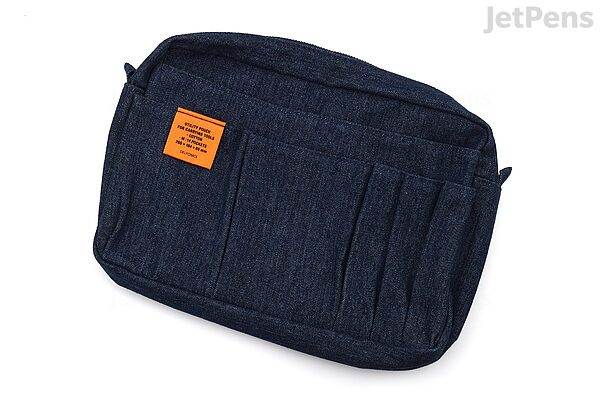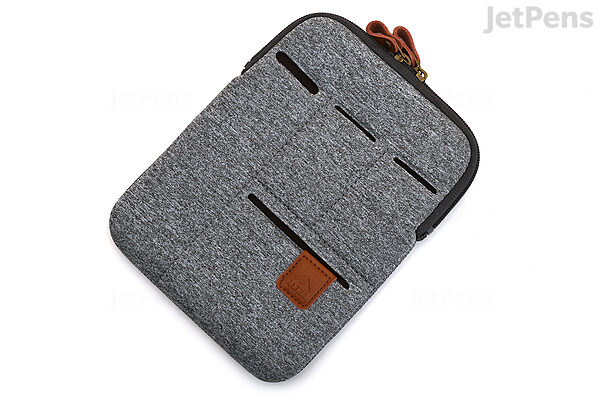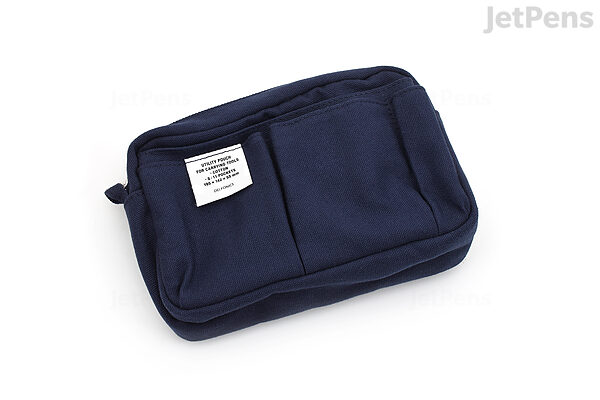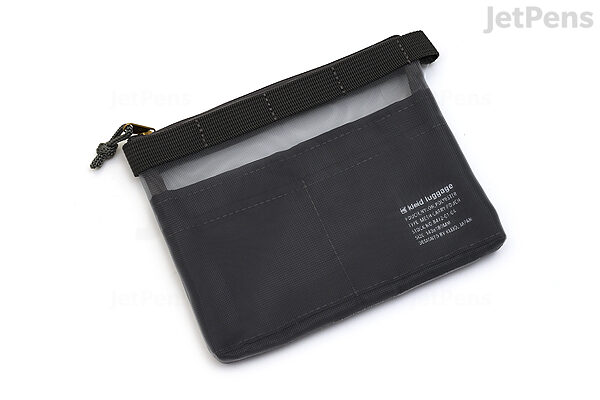http://brianrytel.com/envie-transatlantique/

The volunteer ‘Readers’ were instructed to write out the words andsentences on small 4 x 6-inch pieces of paper, known as ‘slips’.
Volunteer 'Readers' for the Oxford English Dictionary were encouraged to write down interesting headwords along with their appearances in-situ along with the associated bibliographical information. The recommended paper size was 4 x 6-inch pieces of paper which were commonly called 'slips'.
(Double check this against the historical requests from James Murray.)
Avery Templates for 4 x 6" products:
https://www.ebay.com/itm/305189692899
The Merchants Box Co. manufactured a variety of wooden index card boxes in the 1960s.
I've seen some marked 1960 and 1962. Dates of manufacture? Sizes? Definitely 4x6".
As to the mechanics of research, I take notes on four-by-six indexcards, reminding myself about once an hour of a rule I read long agoin a research manual, “Never write on the back of anything.”
Barbara Tuchman took her notes on four-by-six inch index cards.
She repeated the oft-advised mantra to only write on one side of a sheet.
What manual did she read this in? She specifically puts quotes on "Never write on the back of anything." so perhaps it might be something that could be tracked down?
Who was the earliest version of this quote? And was it always towards the idea of cutting up slips or pages and not wanting to lose material on the back? or did it also (later? when?) include ease-of-use and user interface features even when not cutting things up?
At what point did double sided become a thing for personal printed materials? Certainly out of a duty to minimize materials, but it also needed the ability to duplex print pages or photocopy them that way.
PDF Index Card Calendars 4 little templates for printing directly to 3 x 5 and 4 x 6 index cards (with the dates already filled in). Perfect for the Hipster PDA and other compact GTD organizational systems.
The famous OED slips – 4 x 6 inch pieces of paper, some pre-filled with title and publication details – were to be completed by readers, whose task was to write down instances and examples of words in need of definition.
FLATTY WORKS A6 SIZE horizontal# 5460 H4.8×W6.8×D1.4inMaterial Cotton
https://kingjim.us/flatty-works<br /> Flatty Works A6 size horizontal case<br /> ~$24.00
Acquired green version 2023-04-07<br /> https://boffosocko.com/2023/04/20/review-of-king-jim-a6-size-horizontal-flatty-works-case-5460/

https://www.lochby.com/collections/frontpage/products/venture-pouch<br /> Lochby Venture Pouch<br /> $44.00
Acquired one of these in early 2023 on sale?
several internal sections including for pens. <br /> will easily fit a handful or so of 4 x 6" index cards for quick travel

Rickshaw Bags, Traveler's Notebook Case $59.00

https://www.jetpens.com/Delfonics-Carrying-Bag-M-A5-Dark-Denim/pd/37102
Delfonics Carrying Bag - M (A5) - Dark Denim<br /> $36.00
Perhaps a bit large, but could be used as a mini-portable office to hold a variety of things including 4 x 6" index cards for work on the go.

https://www.jetpens.com/Lihit-Lab-Altna-Carrying-Sleeve-Small-Gray/pd/24824<br /> Lihit Lab Altna Carrying Sleeve - Small - Gray<br /> $30.50
B6 is 4.9 x 6.9 inches, so just slightly larger than 4 x 6 inches

https://www.jetpens.com/Lihit-Lab-Smart-Fit-Carrying-Pouch-A6-Olive/pd/12378
Lihit Lab Smart Fit Carrying Pouch - A6 - Olive<br /> $21.50
https://www.jetpens.com/Delfonics-Carrying-Bag-S-A6-Dark-Blue/pd/38393<br /> Delfonics Carrying Bag - S (A6) - Dark Blue $32.00

https://www.jetpens.com/Kleid-Mesh-Carry-Pouch-Mini-Charcoal/pd/37439
Meant for A6 notebooks, but would likely fit 4 x 6" index cards. $17.00

"I keep a dated diary of sorts on index cards, though they rarely go past one card a day."This is something I haven't heard of before. So, you journal/diary on index cards, one per day?
reply to u/taurusnoises (Bob Doto) at tk
Yep, for almost a full year now on 4x6" index cards. (Receipts for the kids: https://boffosocko.com/wp-content/uploads/2023/07/wp-1688411021709-scaled.jpg)
Previously I'd used a Hobonichi Cousin (page per day) journal for this. (Perhaps I should have stayed with the A6 size instead of the larger A5 for consistency?) Decades ago (around 1988ish?) I had started using a 2 page per day DayTimer pocket planners (essentially pre-printed/timed index cards spiral bound into monthly booklets which they actually shipped in index card-like plastic boxes for storage/archival purposes). Technically I've been doing a version of this for a really long time in one form or another.
It generally includes a schedule, to do lists (bullet journal style), and various fleeting notes/journaling similar to the older Memindex format, just done on larger cards for extra space. I generally either fold them in half for pocket storage for the day or carry about in groups for the coming week(s) when I'm away from my desk for extended periods (also with custom blank index card notebooks/pads).
I won't go into the fact that in the 90's I had a 5,000+ person rolodex... or an index card (in the entertainment they called them buck slips) with the phone numbers and names of \~100 people I dealt with regularly when early brick cell phones didn't have great (or any) storage/functionality.
At 9¢/card these are very expensive in comparison to bulk cards which usually can be found for 1-2¢/card. The difference however is in the luxuriousness of the silky smooth texture. Whether you're writing with your favorite fountain pen or a carefully chosen pencil. I don't know if these are the same brand of Bristol cards that Vladimir Nabokov used for his writing, but one could easily image him using such lovely material.
These provide a very smooth writing experience for fountain pens, gel pens and pencils. I particularly love the way my Tennessee Reds and Blackwing 602s glide over their surface. In comparison to some Japanese stationery, I'd put these cards somewhere between tsuru tsuru (slippery) and sara sara (smooth). If you're looking for a toothier paper, you'll definitely want to look elsewhere. They take fountain pens pretty well with no feathering or ghosting. My juiciest fountain pen dries in about 15 seconds, while a drier extra fine is dry in about 7 seconds, so it may take some care not to smear ink if you're on the messier end of the spectrum.
Pencil erases reasonably well, though there may be some minimal residual ghosting here. At 205 gsm, they've got a satisfying thickness unseen in most index cards and one is unlikely to rip or crinkle them when erasing. They're also thick enough that the wettest Sharpie won't bleed much less ghost through. You have to hold a card up to a backlight to see the appearance of any ghosting through it and even then, not well.
For the sticklers used to using standard 4 x 6" index cards, one should take note that the dimensions of these are slightly shorter in both dimensions—they're closer to 3.94" x 5.91". This means that you might have to take some care that while flipping through mixed company of cards your Exacompta can potentially hide between larger imperial sized cards. They're also close to, but not quite A6 in size either (105 x 148.5 mm or 4.1 x 5.8 inches).
4" x 6" Card File Cabinet
Overall measurements for Steelmaster Index Card file for 4 x 6" index cards are 16” deep x 12.25” wide x 5.25” tall.
312 Oak Midget Tray WWeesCoverEquipped same as]No.324,price.55CTohold cards14x3.No.423.Equippedasabove,tohold65Ccards 24x4, priceNo. 533. Standard size.to hold card 3x5, equip-ped as above,price..........No. 7- Nickel ....PrepaidinU. S.onreceiptofpriceNo. 324OakMidgetTraytheCoverWeis75cNo. 644. To hold cards4x6,equipped$1.10(StyleNos.312,423.533and644)asabove......(Style No. 324,213.335and446.)Send for catalog showing many other time-saving office devices. Our goods are soldyour dealer does not carry our line we can supply you direct from the factory.To hold cards 24x4. lengthof tray2%in..equippedwithAtoZindexand100record cards 45cNo. 213. To hold cards 14x3in,, lenght of tray 24in..equipped asabove40cNo.335.Standardsize,tohold3x5 cards.equipped asabove50c80cNo. 446. To hold 4x6 cards,equipped asabove.Any of these trays sent pre-paid in U. S. on receipt ofpriceby stationers everywhere. IfNo. 6 Union St.The WeisManufacturing Co.,Monroe,Mich.,U. S.A.Please mention SYSTEM when writing to advertisers
Notice the 1 1/4" x 3" cards, 2 1/4 x 4" cards in addition to the 3 x 5" and 4 x 6".
The width of the drawers of both McDowell & Craig and Steelcase desks is just wide enough to accommodate two rows of 4 x 6" index cards side by side with enough space that one might insert a sizeable, but thin divider between them
I suspect that this is a specific design choice in a world in which card indexes often featured in the office environment of the mid-twenty first century.
Were other manufacturers so inclined to do this? Is there any evidence that this was by design? Did people use it for this? Was there a standard drawer width?
The metal inserts to section off the desk drawer area could have also been used for this sort of purpose and had cut outs to allow for expanding and contracting the interior space.
Keep in mind that some of these tanker desks were also manufactured with specific spaces or areas intended for typewriters or for storing them.
Analog Supplies
I should mention that the Stockroom Plus 4 x 6" cards I got a while back are great with even my juiciest fountain pens. They're some of the least expensive gridded cards I've been able to find and are a fraction of the cost of the Exacompta.
One of his secrets was a stack of 4 x 6 inch note cards that he compiled over the span of four decades.
Though other sources like the CBS News article look like 3 x 5" index cards, John Hunt indicates that Ronald Reagan used 4 x 6" inch cards for his notes.
May 19, 2004 #1 Hello everyone here at the forum. I want to thank everyone here for all of the helpful and informative advice on GTD. I am a beginner in the field of GTD and wish to give back some of what I have received. What is posted below is not much of tips-and-tricks I found it very helpful in understanding GTD. The paragraphs posted below are from the book Lila, by Robert Pirsig. Some of you may have read the book and some may have not. It’s an outstanding read on philosophy. Robert Pirsig wrote his philosophy using what David Allen does, basically getting everything out of his head. I found Robert Pirsigs writing on it fascinating and it gave me a wider perspective in using GTD. I hope you all enjoy it, and by all means check out the book, Lila: An Inquiry Into Morals. Thanks everyone. arthur
Arthur introduces the topic of Robert Pirsig and slips into the GTD conversation on 2004-05-19.
Was this a precursor link to the Pile of Index Cards in 2006?
Note that there doesn't seem to be any discussion of any of the methods with respect to direct knowledge management until the very end in which arthur returns almost four months later to describe a 4 x 6" card index with various topics he's using for filing away his knowledge on cards. He's essentially recreated the index card based commonplace book suggested by Robert Pirsig in Lila.
The drawers are jammed with jokes typed on 4-by-6-inch cards — 52 drawers, stacked waist-high, like a card catalog of a certain comedian’s life’s work, a library of laughs.
Joan Rivers had an index card catalog with 52 drawers of 4-by-6-inch index cards containing jokes she'd accumulated over her lifetime of work. She had 18 2 drawer stackable steel files that were common during the mid-1900s. Rather than using paper inserts with the label frames on the card catalogs, she used a tape-based label maker to designate her drawers.

Scott Currie, who worked with Melissa Rivers on a book about her mother, Joan Rivers, at the comedian’s former Manhattan office. Many of her papers are stored there.Credit...Hiroko Masuike/The New York Times
Note carefully that the article says 52 drawers, but the image in the article shows a portion of what can be surmised to be 18 2-drawer cabinets for a total of 36 drawers. (14 2-drawer cabinets are pictured, but based on size and perspective, there's one row of 4 2-drawer boxes not shown.)
1346-4 025719134648 BDY13464 BDY-13464 BDY 13464 Buddy Products Black Single Drawer Card File, 4 x 6, 1346-4
https://www.youtube.com/watch?v=b-Wp0sLpnMY
PVA Glue used in bookbinding, but isn't inexpensive.
Recommendations in order: PVA, Tacky Glue, Mod Podge (regular)
Brush on top edge and do two coats. Don't get it down between sheets.
https://www.ikea.com/us/en/p/kuggis-box-with-lid-transparent-black-00514033/#content
7 x 10.25 x 6"
This is big enough and just about the perfect size for 4 x 6" index cards. The lid has a slight indent to make it easily stackable.

These should easily fit 4 x 6" index cards as well as card dividers with taller tabs which commercially don't often get taller than 4 1/2".
See also microfiche divider guides.
https://www.instagram.com/p/CeWV6xBuZUN/?hl=en
Ryan Holiday in the past has made custom 4 x 6" index cards for taking notes for his individual projects.
Pictured: A custom slip with 11 light gray lines, small margins all around, and at the top the printed words: "Courage. Temperance. Justice. Wisdom."
<small><cite class='h-cite via'>ᔥ <span class='p-author h-card'>Billy Oppenheimer, research assistant to Ryan Holiday</span> in The Notecard System: Capture, Organize, and Use Everything You Read, Watch, and Listen To - Billy Oppenheimer (<time class='dt-published'>11/03/2022 16:53:44</time>)</cite></small>
<div style="padding:16px;"> <div style=" display: flex; flex-direction: row; align-items: center;"> <div style="background-color: #F4F4F4; border-radius: 50%; flex-grow: 0; height: 40px; margin-right: 14px; width: 40px;"></div> <div style="display: flex; flex-direction: column; flex-grow: 1; justify-content: center;"> <div style=" background-color: #F4F4F4; border-radius: 4px; flex-grow: 0; height: 14px; margin-bottom: 6px; width: 100px;"></div> <div style=" background-color: #F4F4F4; border-radius: 4px; flex-grow: 0; height: 14px; width: 60px;"></div></div></div><div style="padding: 19% 0;"></div> <div style="display:block; height:50px; margin:0 auto 12px; width:50px;"><svg width="50px" height="50px" viewBox="0 0 60 60" version="1.1" xmlns="https://www.w3.org/2000/svg" xmlns:xlink="https://www.w3.org/1999/xlink"><g stroke="none" stroke-width="1" fill="none" fill-rule="evenodd"><g transform="translate(-511.000000, -20.000000)" fill="#000000"><g><path d="M556.869,30.41 C554.814,30.41 553.148,32.076 553.148,34.131 C553.148,36.186 554.814,37.852 556.869,37.852 C558.924,37.852 560.59,36.186 560.59,34.131 C560.59,32.076 558.924,30.41 556.869,30.41 M541,60.657 C535.114,60.657 530.342,55.887 530.342,50 C530.342,44.114 535.114,39.342 541,39.342 C546.887,39.342 551.658,44.114 551.658,50 C551.658,55.887 546.887,60.657 541,60.657 M541,33.886 C532.1,33.886 524.886,41.1 524.886,50 C524.886,58.899 532.1,66.113 541,66.113 C549.9,66.113 557.115,58.899 557.115,50 C557.115,41.1 549.9,33.886 541,33.886 M565.378,62.101 C565.244,65.022 564.756,66.606 564.346,67.663 C563.803,69.06 563.154,70.057 562.106,71.106 C561.058,72.155 560.06,72.803 558.662,73.347 C557.607,73.757 556.021,74.244 553.102,74.378 C549.944,74.521 548.997,74.552 541,74.552 C533.003,74.552 532.056,74.521 528.898,74.378 C525.979,74.244 524.393,73.757 523.338,73.347 C521.94,72.803 520.942,72.155 519.894,71.106 C518.846,70.057 518.197,69.06 517.654,67.663 C517.244,66.606 516.755,65.022 516.623,62.101 C516.479,58.943 516.448,57.996 516.448,50 C516.448,42.003 516.479,41.056 516.623,37.899 C516.755,34.978 517.244,33.391 517.654,32.338 C518.197,30.938 518.846,29.942 519.894,28.894 C520.942,27.846 521.94,27.196 523.338,26.654 C524.393,26.244 525.979,25.756 528.898,25.623 C532.057,25.479 533.004,25.448 541,25.448 C548.997,25.448 549.943,25.479 553.102,25.623 C556.021,25.756 557.607,26.244 558.662,26.654 C560.06,27.196 561.058,27.846 562.106,28.894 C563.154,29.942 563.803,30.938 564.346,32.338 C564.756,33.391 565.244,34.978 565.378,37.899 C565.522,41.056 565.552,42.003 565.552,50 C565.552,57.996 565.522,58.943 565.378,62.101 M570.82,37.631 C570.674,34.438 570.167,32.258 569.425,30.349 C568.659,28.377 567.633,26.702 565.965,25.035 C564.297,23.368 562.623,22.342 560.652,21.575 C558.743,20.834 556.562,20.326 553.369,20.18 C550.169,20.033 549.148,20 541,20 C532.853,20 531.831,20.033 528.631,20.18 C525.438,20.326 523.257,20.834 521.349,21.575 C519.376,22.342 517.703,23.368 516.035,25.035 C514.368,26.702 513.342,28.377 512.574,30.349 C511.834,32.258 511.326,34.438 511.181,37.631 C511.035,40.831 511,41.851 511,50 C511,58.147 511.035,59.17 511.181,62.369 C511.326,65.562 511.834,67.743 512.574,69.651 C513.342,71.625 514.368,73.296 516.035,74.965 C517.703,76.634 519.376,77.658 521.349,78.425 C523.257,79.167 525.438,79.673 528.631,79.82 C531.831,79.965 532.853,80.001 541,80.001 C549.148,80.001 550.169,79.965 553.369,79.82 C556.562,79.673 558.743,79.167 560.652,78.425 C562.623,77.658 564.297,76.634 565.965,74.965 C567.633,73.296 568.659,71.625 569.425,69.651 C570.167,67.743 570.674,65.562 570.82,62.369 C570.966,59.17 571,58.147 571,50 C571,41.851 570.966,40.831 570.82,37.631"></path></g></g></g></svg></div><div style="padding-top: 8px;"> <div style=" color:#3897f0; font-family:Arial,sans-serif; font-size:14px; font-style:normal; font-weight:550; line-height:18px;">View this post on Instagram</div></div><div style="padding: 12.5% 0;"></div> <div style="display: flex; flex-direction: row; margin-bottom: 14px; align-items: center;"><div> <div style="background-color: #F4F4F4; border-radius: 50%; height: 12.5px; width: 12.5px; transform: translateX(0px) translateY(7px);"></div> <div style="background-color: #F4F4F4; height: 12.5px; transform: rotate(-45deg) translateX(3px) translateY(1px); width: 12.5px; flex-grow: 0; margin-right: 14px; margin-left: 2px;"></div> <div style="background-color: #F4F4F4; border-radius: 50%; height: 12.5px; width: 12.5px; transform: translateX(9px) translateY(-18px);"></div></div><div style="margin-left: 8px;"> <div style=" background-color: #F4F4F4; border-radius: 50%; flex-grow: 0; height: 20px; width: 20px;"></div> <div style=" width: 0; height: 0; border-top: 2px solid transparent; border-left: 6px solid #f4f4f4; border-bottom: 2px solid transparent; transform: translateX(16px) translateY(-4px) rotate(30deg)"></div></div><div style="margin-left: auto;"> <div style=" width: 0px; border-top: 8px solid #F4F4F4; border-right: 8px solid transparent; transform: translateY(16px);"></div> <div style=" background-color: #F4F4F4; flex-grow: 0; height: 12px; width: 16px; transform: translateY(-4px);"></div> <div style=" width: 0; height: 0; border-top: 8px solid #F4F4F4; border-left: 8px solid transparent; transform: translateY(-4px) translateX(8px);"></div></div></div> <div style="display: flex; flex-direction: column; flex-grow: 1; justify-content: center; margin-bottom: 24px;"> <div style=" background-color: #F4F4F4; border-radius: 4px; flex-grow: 0; height: 14px; margin-bottom: 6px; width: 224px;"></div> <div style=" background-color: #F4F4F4; border-radius: 4px; flex-grow: 0; height: 14px; width: 144px;"></div></div></div><script async src="//www.instagram.com/embed.js"></script>
I used to do this sort of practice before, but I used buckslips instead.
Dwyer, Edward J. “File Card Efficiency.” Journal of Reading 26, no. 2 (1982): 171–171.
Ease of use in writing and grading with short assignments by using 4 x 6" index cards in classrooms.
This sounds like some of the articles from 1912 and 1917 about efficiency of card indexes for teaching.
I'm reminded of some programmed learning texts that were card-based (or really strip-based since they were published in book form) in the 1960s and 1970s. Thse books had small strips with lessons or questions on the front with the answers on the reverse. One would read in strips through the book from front to back and then start the book all over again on page one on the second row of strips and so on.
Posted byu/jackbaty4 hours agoCard sizes .t3_xib133._2FCtq-QzlfuN-SwVMUZMM3 { --postTitle-VisitedLinkColor: #9b9b9b; --postTitleLink-VisitedLinkColor: #9b9b9b; --postBodyLink-VisitedLinkColor: #989898; } I've been on-again/off-again with paper for PKM, but one thing remains consistent each time: I don't enjoy using 4x6 index cards. I much prefer 3x5-inch cards. I realize that it's irrational, but there it is.My question is if I dive into building an antinet, will I regret using 3x5 cards? I already have hundreds of them. I have dividers, holders, and storage boxes for them. I just prefer how they _feel_, as weird as that sounds.I'd like to hear if people are using 3x5 cards successfully or if you've come to regret it.
While it may be slightly more difficult to find larger metal/wood cases for the 4x6 or 5x8 cards, it's a minor nuisance and anyone who wants them will eventually find the right thing for them. Beyond this, choose the card size that feels right to you.
If you don't have an idea of what you need or like, try things out for 10-20 cards and see how it works for you, your handwriting size, and general needs. People have been using 3x5, 4x6, and even larger for hundreds of years without complaining about any major issues. If Carl Linnaeus managed to be okay with 3x5, which he hand cut by the way, I suspect you'll manage too.
Of course I won't mention to the Americans the cleverness of the A6, A5, A4 paper standards which allows you to fold the larger sizes in half to get the exact next smaller size down. Then you might get the benefit of the smaller size as well as the larger which could be folded into your collection of smaller cards, you just have to watch out for accidentally wrapping ("taco-ing") a smaller card inside of a larger one and losing it. I suppose you could hand cut your own 5" x 6" larger cards to do this if you found that you occasionally needed them.
For the pocketbook conscious, 3x5 does have the benefit of lower cost as well as many more options and flexibility than larger sizes.
At least commercial card sizes are now largely standardized, so you don't have deal with changing sizes the way Roland Barthes did over his lifetime.
My personal experience and a long history of so many manuals on the topic saying "cards of the same size" indicates that you assuredly won't have fun mixing different sized slips together. I personally use 3x5" cards in a waste book sense, but my main/permanent collection is in 4x6" format. Sometimes I think I should have done 3 x 5, but it's more like jealousy than regret, particularly when it comes to the potential of a restored fine furniture card catalog. But then again...
The most suitable format seems to be DIN A6 (14.8 x 10.5 cm).
Or roughly 4 x 6".
Forcertainlyagreatervarietyofcards,clippings,andsuchlikecan befiledbehind 4x6slipsthan behind3x5's.
A benefit of 4 x 6" cards is that clippings and other items can often be more easily filed along with them as opposed to the smaller 3 x 5" cards.
shall I adopt the 3x5 slip or the 4x61
Dow indicates in 1924 that 3 x 5" and 4 x 6" are both commonly had in a range of materials the US as well as boxes or cases to keep them in. He does mention that one can also cut their own paper, indicating that this is a possibility.